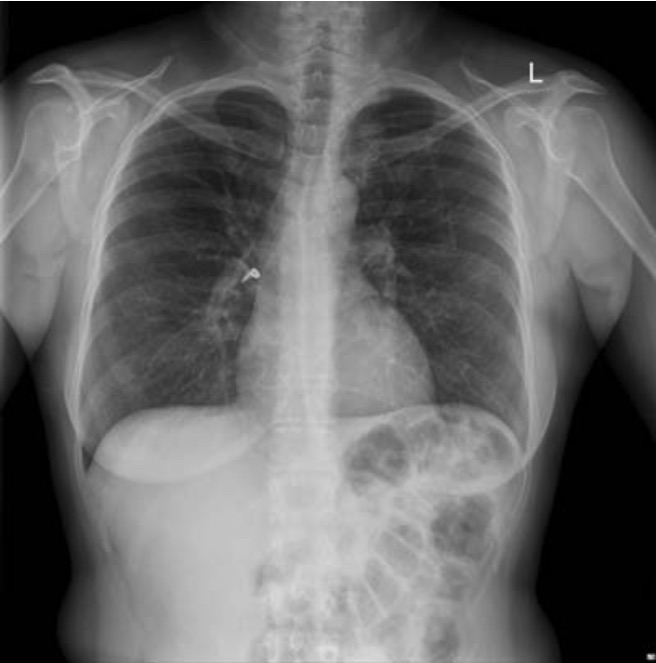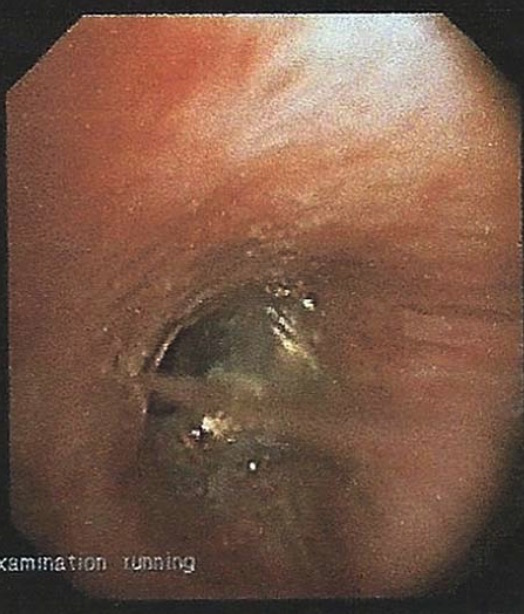Scary Inhaler Accident: What a Woman Learned from It

A woman in Australia had an unexpected medical emergency on New Year's Eve after she accidentally inhaled one of her earrings, according to a new case report.
The 41-year-old woman was at a New Year's Eve party when she felt like she was starting to wheeze. She had asthma, and reached into her purse for her inhaler, according to the report published April 9 in the journal BMJ Case Reports.
The inhaler rattled when she picked it up, but the woman dismissed it as a loose connection within the device. [8 Strange Signs You're Having an Allergic Reaction]
As soon as she inhaled, the woman felt a severe scratch at the back of her throat. She coughed up blood, began wheezing and became short of breath, according to the report.
"Unfortunately, she was not taught to replace the cap on the inhaler after she has used it," said the lead author of the case report, Dr. Lucinda Blake, a core medical trainee at St. Vincent's Hospital in Sydney. "While her inhaler was uncapped in her bag, an earring that was also loose in her bag found its way into the inhaler and became lodged in it." The heart-shaped earring was wedged within a bend inside the inhaler, making it hard to see.
What's more, the woman did not know that she should inspect the inhaler before using it, Blake said.

After an ambulance brought the woman to the hospital, she told doctors she was concerned she had swallowed a piece of foil from a medical pack in her purse. The doctors ordered a chest X-ray, and saw an abnormality right away. It had "features consistent with a stud earring," Blake said.
Sign up for the Live Science daily newsletter now
Get the world’s most fascinating discoveries delivered straight to your inbox.
A CT scan confirmed the finding, showing that the earring was stuck in the woman's right bronchus, one of the two main airways leading from the trachea (windpipe) into the lungs.
Doctors treated her with antibiotics to prevent infection. They also performed a bronchoscopy: With the insertion of a thin, flexible tool with a camera into her throat, they examined her bronchus and removed the earing.
Interestingly, they found large amounts of mucus around the earring, which was "likely the body's attempt to expel the foreign body," Blake said.
If they had waited to remove the earring, the woman's body might have healed over the earring, embedding it within the bronchus, Blake said.
The woman made a full recovery, and is now careful to place the lid on her inhaler, Blake said. But the woman is hardly alone — more education is needed to teach patients how to store their inhalers, she said.
"I think that teaching should include explaining to patients the importance of replacing inhaler caps, teaching them how to inspect their inhalers thoroughly to ensure that there are no unwanted objects concealed and educating them on the potential damage inhaled objects can cause," Blake said.
However, some new inhalers that have attached caps may help people avoid this problem, she added.
It's rare to hear of people inhaling something as large and as hard as an earring, said Dr. Brahim Ardolic, the chairman of emergency medicine at Staten Island University Hospital, who was not involved in the patient's case.
But, it's not uncommon for people to put their capless inhalers in their pockets, and then accidentally inhale lint or thread that gets stuck in the inhaler, he said. Storing an inhaler without its cap also exposes the device to bacteria, he said.
"To be honest, if your inhaler's not covered, just don't use it," Ardolic said.
Follow Laura Geggel on Twitter @LauraGeggel. Follow Live Science @livescience, Facebook & Google+. Original article on Live Science.

Laura is the archaeology and Life's Little Mysteries editor at Live Science. She also reports on general science, including paleontology. Her work has appeared in The New York Times, Scholastic, Popular Science and Spectrum, a site on autism research. She has won multiple awards from the Society of Professional Journalists and the Washington Newspaper Publishers Association for her reporting at a weekly newspaper near Seattle. Laura holds a bachelor's degree in English literature and psychology from Washington University in St. Louis and a master's degree in science writing from NYU.









